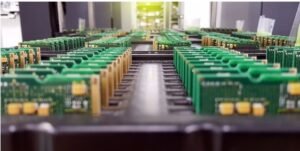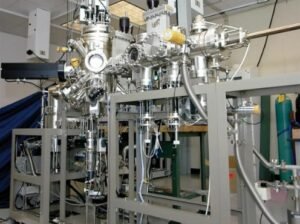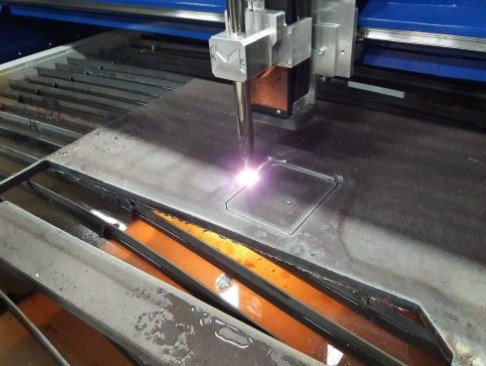Sheet metal plays a crucial role in enhancing the efficiency of electronics cooling systems. Renowned for its excellent heat transfer properties, malleability, and corrosion resistance, sheet metal is instrumental in fabricating components that facilitate optimal heat dissipation. This overview explores the pivotal role of sheet metal in the design, fabrication, and performance of cooling systems for electronic devices.
Importance of Efficient Heat Dissipation in Electronic Devices
Modern electronic devices are packed with powerful components that generate significant amounts of heat during operation. This heat buildup can be detrimental to the performance and lifespan of these devices. Efficient heat dissipation is crucial for ensuring the reliability and longevity of electronics.
Sheet metal plays a vital role in achieving effective heat dissipation in electronic devices. Its unique properties and versatility make it an ideal material for crafting heat sinks, chassis, and other cooling components.
Properties of Sheet Metal
Sheet metal stands out in electronics cooling systems due to its excellent heat conductivity, malleability for intricate designs, and corrosion resistance. These properties enable the fabrication of effective components, ensuring optimal heat dissipation in electronic devices.
Conductivity and Heat Transfer Capabilities
One of the most important properties of sheet metal for electronics cooling is its high thermal conductivity. This means that it readily absorbs heat from electronic components and transfers it away from the heat source.
Different types of sheet metal have varying thermal conductivity values. Aluminum, for example, is a widely used choice due to its excellent thermal conductivity and lightweight nature. Copper, while offering even better conductivity, comes at a higher cost and weight disadvantage.
Malleability and Formability for Fabrication
Sheet metal is highly malleable and formable, allowing it to be shaped into intricate designs for optimal heat dissipation. This property enables the creation of heat sinks with fins, channels, and other features that maximize surface area and heat transfer efficiency.
Various fabrication techniques, such as stamping and laser cutting, can be used to create complex sheet metal components for specific cooling needs.
Corrosion Resistance in Electronic Environments
Electronic devices frequently operate in environments characterized by fluctuations in temperature and humidity. The choice of sheet metal for cooling systems is often rooted in its exceptional corrosion resistance. This property plays a pivotal role in safeguarding the integrity of the cooling system, acting as a protective barrier against environmental elements that could otherwise lead to corrosion and premature failure. The corrosion-resistant nature of sheet metal ensures the durability and longevity of the cooling components, making it a reliable choice for maintaining the effectiveness of electronic cooling systems in diverse and challenging operating conditions. This inherent resistance to corrosion contributes significantly to the robustness and reliability of cooling systems, enhancing their ability to withstand environmental stresses over the lifespan of electronic devices.
Certain types of sheet metal, such as stainless steel or aluminum with specific coatings, offer superior corrosion resistance for demanding applications.
Fabrication Techniques
Fabricating components for electronics cooling systems involves techniques like stamping and forming for shaping, laser cutting for precision, and CNC machining for customized fabrication. These processes ensure the creation of efficient cooling elements from sheet metal.
Stamping and Forming Processes
Stamping is a high-volume, cost-effective process that uses dies to create precisely shaped sheet metal parts. This technique is ideal for manufacturing large quantities of identical heat sinks or other cooling components.
Forming involves shaping sheet metal using various tools and techniques such as bending, stretching, and rolling. This method allows for greater design flexibility and customization compared to stamping.
Laser Cutting Technology
Laser cutting stands out as a precise and efficient method for shaping complex geometries in sheet metal, particularly in the context of heat sink fabrication. This technology excels in producing intricate designs with precise fin dimensions and intricate features, contributing to enhanced heat transfer capabilities. The precision of laser cutting ensures that intricate patterns and detailed structures can be crafted with accuracy, meeting the specific requirements of heat dissipation in electronic devices. By leveraging laser technology, manufacturers can create heat sinks with optimal geometries, promoting efficient heat transfer and contributing to the overall effectiveness of cooling systems in maintaining optimal operating temperatures for electronic components.
Laser cutting also minimizes material waste and allows for the creation of lightweight heat sinks with optimal efficiency.
CNC Machining for Precision
In situations demanding the utmost precision and accuracy, CNC machining emerges as an invaluable tool for sheet metal fabrication. This computer-controlled technology excels in crafting intricate heat sinks with complex geometries and tight tolerances. The precision afforded by CNC machining ensures that even the most detailed and intricate designs can be realized with accuracy. This level of control is particularly crucial in the creation of heat sinks where precise dimensions and intricate features are essential for optimal thermal performance. By leveraging CNC machining, manufacturers can achieve the highest levels of precision in fabricating heat sinks, contributing significantly to the efficiency and reliability of cooling systems in electronic devices.
CNC machining is ideal for creating custom heat sinks for specialized applications where precise control over heat dissipation is crucial.
Design Considerations
In designing cooling systems for electronics, key considerations include optimizing airflow for heat dissipation, integrating fins and channels to enhance cooling efficiency, and tailoring designs to meet specific specifications of electronic devices.
Importance of Proper Airflow
Achieving effective heat dissipation hinges on ensuring proper airflow across the heat sink surface. The design of the cooling system must prioritize facilitating unobstructed airflow through the fins and channels. This allows air to seamlessly traverse the cooling structure, carrying away heat from the electronic components in the process. A well-designed system optimizes the interaction between the heat sink and the surrounding air, promoting efficient heat transfer. By strategically managing airflow, the cooling system maximizes its capability to dissipate heat, thereby enhancing the overall thermal performance and reliability of electronic devices. This emphasis on airflow design is integral to preventing overheating and maintaining the longevity of electronic components.
Factors such as fan placement, air inlet and outlet design, and internal airflow resistance need careful consideration to optimize cooling performance.
Integration of Fins and Channels for Enhanced Heat Dissipation
The cooling efficiency of a heat sink is intricately linked to its surface area, with fins and channels playing a pivotal role in enhancing this aspect. Fins and channels substantially augment the available surface area for heat transfer, facilitating a faster and more efficient dissipation process. This increased surface area allows for a greater contact area between the heat sink and the surrounding air, promoting improved thermal performance. By maximizing the opportunities for heat to be transferred from the electronic components to the cooling system, fins and channels contribute significantly to maintaining optimal operating temperatures and preventing overheating in electronic devices.
The design and arrangement of fins and channels must be carefully optimized for maximum airflow and heat transfer performance.
Customization Based on Electronic Device Specifications
Addressing the distinctive heat dissipation requirements of electronic devices is paramount, considering factors such as power consumption, operating temperature range, and form factor. Custom-designed sheet metal cooling systems become imperative, tailoring solutions to the specific demands of each application. This personalized approach guarantees the efficient removal of excess heat, mitigating the risk of overheating and ensuring optimal device performance and longevity. By aligning cooling mechanisms with the unique characteristics of electronic components, sheet metal solutions become a crucial element in enhancing the reliability and functionality of various devices across diverse applications.

Case Studies
Examining case studies reveals successful implementations of sheet metal in electronic cooling systems, showcasing notable performance improvements and efficiency gains. These real-world examples demonstrate the effectiveness and impact of sheet metal in enhancing electronic device thermal management.
Successful Implementations Using Sheet Metal in Cooling Systems
Sheet metal emerges as a cornerstone in electronics cooling, evident in successful applications across industries. In telecommunications, sheet metal heat sinks cool high-power amplifiers, guaranteeing reliable signal transmission. Meanwhile, the automotive sector relies on sheet metal heat sinks to manage heat from power electronics and batteries, enhancing fuel efficiency and overall vehicle performance. These instances underscore sheet metal’s versatility, demonstrating its pivotal role in addressing diverse cooling needs and contributing to the efficiency and reliability of electronic systems in both telecommunications and automotive applications.
Performance Improvements and Efficiency Gains
Utilizing sheet metal in cooling systems has yielded substantial performance enhancements and efficiency gains across diverse electronic devices. Sheet metal heat sinks, by adeptly managing heat generation, contribute to prolonged component lifespan, heightened reliability, and overall system efficiency. In consumer electronics studies, the integration of sheet metal heat sinks in laptops demonstrated a remarkable 20% reduction in operating temperatures, accompanied by a 15% increase in overall system performance. These findings underscore the pivotal role of sheet metal in addressing thermal challenges and optimizing electronic device functionality, with tangible benefits evident in real-world applications.
Challenges and Solutions
Challenges in employing sheet metal for electronic cooling systems include potential issues like uneven heat distribution. Solutions involve innovative design modifications and advancements in fabrication techniques, addressing these challenges and ensuring optimal heat dissipation for enhanced electronic device performance.
Addressing Potential Issues in Sheet Metal Cooling Systems
While sheet metal offers numerous advantages for electronics cooling, certain challenges need to be addressed:
- Weight and Volume: Increasing the surface area of heat sinks for enhanced cooling can lead to increased weight and volume, which may be undesirable for some applications.
Solution: Utilizing lightweight materials like aluminum and optimizing the design for maximum surface area within the available space can help mitigate this challenge.
- Cost: Fabrication techniques like CNC machining can be expensive for large-scale production.
Solution: Implementing cost-effective techniques like stamping or laser cutting for high-volume production can help reduce costs.
- Clogging of Fins and Channels: Dust and other contaminants can accumulate in the fins and channels, hindering airflow and reducing cooling efficiency.
Solution: Implementing dust filters and designing the heat sink for easy cleaning can help minimize clogging.
- Noise Generation: Fans used in conjunction with heat sinks can generate significant noise, which can be undesirable in some environments.
Solution: Utilizing quieter fan technologies and optimizing fan placement to minimize noise impact can address this issue.
Innovations and Advancements in Overcoming Challenges
Continuous innovations and advancements play a pivotal role in addressing challenges within sheet metal cooling systems. Ongoing research focuses on overcoming obstacles, ensuring improved performance, increased efficiency, and the development of novel solutions for optimizing electronic device thermal management.
The field of electronics cooling constantly evolves, with new innovations and advancements addressing the challenges mentioned above:
- Microfluidics: This technology utilizes miniaturized channels and pumps to circulate fluids directly through the heat sink, achieving exceptionally efficient cooling with minimal weight and volume increase.
- Graphene-based materials: Graphene offers exceptional thermal conductivity, enabling the creation of ultra-thin and lightweight heat sinks with superior heat dissipation capabilities.
- Additive Manufacturing (3D Printing): This technology allows for the creation of complex and customized heat sinks with intricate internal structures, optimizing airflow and heat transfer.
- Smart Cooling Systems: Utilizing sensors and microcontrollers, these systems dynamically adjust fan speed and airflow based on real-time temperature readings, optimizing cooling efficiency and minimizing noise.

Conclusion
Sheet metal remains a crucial material for designing efficient and reliable electronics cooling systems. Its inherent properties, versatility, and ability to be readily fabricated make it an ideal choice for various applications. By utilizing advanced design techniques, fabrication methods, and innovative materials, engineers can overcome existing challenges and develop even more effective sheet metal cooling solutions for the future of electronics.

